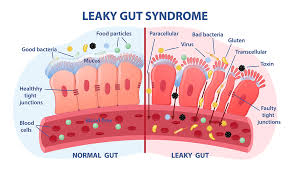Exon-skipping therapy shows promise for DMD44
Del-zota helps ambulatory, nonambulatory patients, trial data show
Delpacibart zotadirsen (del-zota), an investigational exon-skipping therapy from Avidity Biosciences, is demonstrating the potential to reverse disease progression in boys and young men with Duchenne muscular dystrophy (DMD) amenable to exon 44 skipping, or DMD44.
That’s according to one-year data from the Phase 1/2 EXPLORE44 trial (NCT05670730) and the EXPLORE44 open-label extension (OLE) study (NCT06244082), which showed that the treatment led to functional improvements for DMD patients who both could (ambulatory) and could not (nonambulatory) walk.
“These results represent an important step forward for the DMD community and offer hope to people and families affected by DMD44 that del-zota may … result in meaningful, real-world impact,” Steve Hughes, MD, chief medical officer for Avidity, said in a written Q&A with Muscular Dystrophy News Today.
The DMD community is similarly enthusiastic. In a separate statement, Michael Kelly, PhD, chief scientific officer for CureDuchenne, said that the nonprofit, which has invested in the early clinical development of del-zota, “is thrilled to see these results.”
Del-zota’s “approval can’t come soon enough for Duchenne patients awaiting meaningful treatment options,” Kelly said.
On track for accelerated approval application
Avidity is on track to seek accelerated approval of del-zota from the U.S. Food and Drug Administration (FDA) by year’s end. Regulators have granted the therapy several statuses intended to speed its clinical development over the years, and have aligned with Avidity on its plans for accelerated approval.
Hughes said the company is “focused on bringing del-zota to people living with DMD44 as quickly as possible,” while working closely with regulators to ensure top safety and quality standards.
“FDA accelerated approval of del-zota would represent a major step forward for the DMD community, helping to potentially expand treatment options for these patients and paving the way for further innovation,” the scientist said.
While accelerated approval would allow del-zota to be marketed based on preliminary clinical trial data, conversion to full approval will require more evidence of the therapy’s clinical benefit.
To that end, top-line data from the EXPLORE44 OLE study are due later this year. Plans are also underway for a Phase 3 confirmatory trial, which Avidity will share with regulators “in the very near future,” Hughes said.
Trial shows treatment boosts dystrophin production
People with DMD have mutations in the DMD gene that lead to a deficiency in a muscle-protecting protein called dystrophin, driving the hallmark symptoms of muscle weakness and wasting.
The DMD gene includes protein-coding segments called exons. Like other exon-skipping therapies, del-zota works to mask an exon, enabling production of a shorter but still functional dystrophin protein. It is intended for people with mutations amenable to exon 44 skipping, and is given via infusions into the bloodstream.
EXPLORE44 enrolled boys and men with DMD, ages 7-27, who each received three doses of del-zota or a placebo at either 5 mg/kg every six weeks or 10 mg/kg every eight weeks. The OLE involves 39 participants, 23 of whom rolled over from EXPLORE44. All are receiving the 5 mg/kg regimen for two years.
Avidity recently reported results from 17 participants, 12 ambulatory and five nonambulatory, who were treated with del-zota continuously for one year across the EXPLORE44 and EXPLORE44-OLE studies.
Consistent with earlier reports, the data showed that del-zota led to statistically significant increases in dystrophin production by about 25% of normal. Total dystrophin levels were restored to up to 58% of normal.
Levels of creatine kinase, a biomarker of muscle damage, rapidly declined by more than 80% and were sustained at near normal levels with up to 16 months of follow-up. About half of the participants had creatine kinase levels within the normal range after a year.
While the biomarker data is promising, “it was important for us to learn how these results may translate into functional improvements,” Hughes noted.
Across several functional evaluations, including ones assessing both upper and lower limb function, the data showed consistent improvements for patients treated with del-zota compared with a group of untreated participants from a separate natural study, in whom functional abilities declined over time.
These gains were observed for both ambulatory and nonambulatory patients, Hughes noted.
The data overall “are indicative of a reversal in disease progression” relative to what’s expected in the disease’s natural course, Kelly said.
Several exon-skipping therapies are already on the U.S. market for treating DMD, although none is designed for exon 44 skipping.
While it has been “incredible to see how the field has evolved in recent years,” first-generation exon-skipping therapies face notable delivery challenges, Hughes said. When given into the bloodstream, they don’t easily enter muscle cells, where they’re most needed.
Del-zota, known as an antibody oligonucleotide conjugate (AOC), is designed to overcome that challenge. It contains a molecule used to skip exon 44 called a phosphorodiamidate morpholino oligomer (PMO), linked to an antibody that targets the treatment to skeletal and cardiac muscles.
In clinical studies, del-zota has led to better muscle delivery of the PMO than any other similar technology to date, according to Hughes.
The clinical development of some other PMO-based investigational therapies for DMD has been discontinued over the last year. That del-zota has demonstrated a good long-term safety profile is “very reassuring,” Kelly noted. The most common treatment-emergent side effects in the recent analysis were upper respiratory tract symptoms, diarrhea, fall, back pain, and headache, which were usually mild or moderate.
Avidity believes its AOC platform ultimately holds promise for treating a wider range of muscular dystrophy (MD) patients.
It has a number of candidates in development to target additional DMD-causing mutations. One called AOC 1045, intended for exon 45 skipping, is next in line for clinical trials, according to Hughes.
The company is also working on therapies for less common forms of MD for which there are no approved treatments, including delpacibart etedesiran (del-desiran) for myotonic dystrophy type 1 and delpacibart braxlosiran (del-brax) for facioscapulohumeral MD.
A completely enrolled Phase 3 trial of del-desiran called HARBOR (NCT06411288) is underway, and a Phase 3 trial of del-brax called FORTITUDE-3 (NCT07038200) is recruiting at U.S. sites. Avidity intends to seek regulatory approvals for both therapies next year.
“When one therapy succeeds, we all succeed,” Hughes said. “We hope that our momentum … encourages further innovation in developing targeted delivery technologies … potentially leading to more treatments for people in need who are living with rare and serious diseases.”











